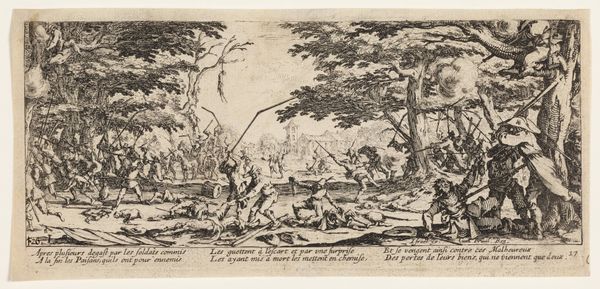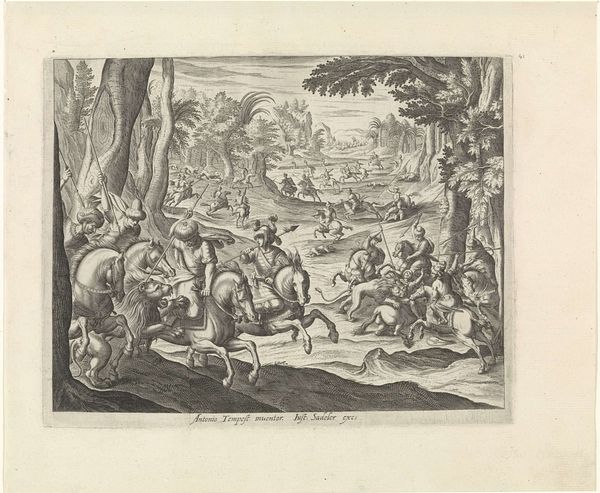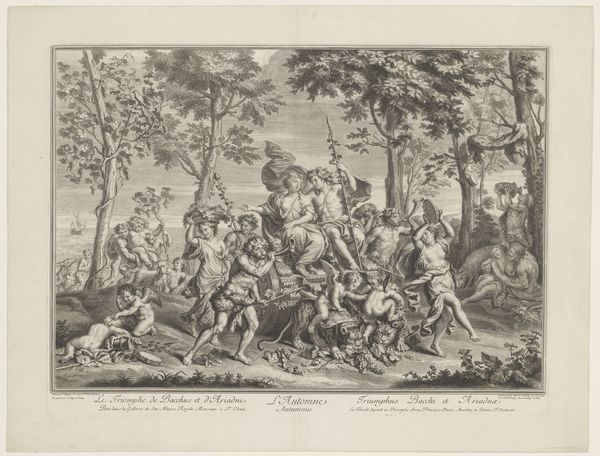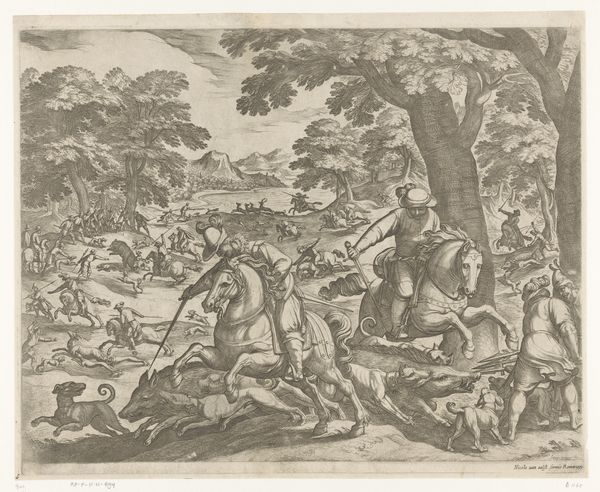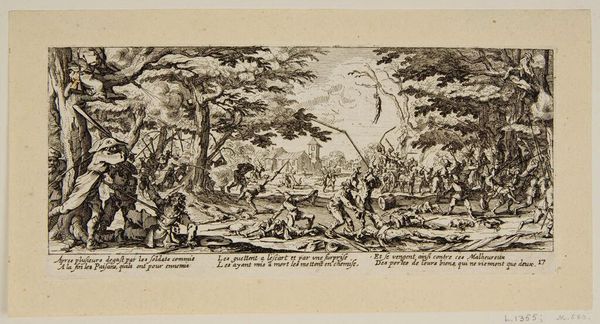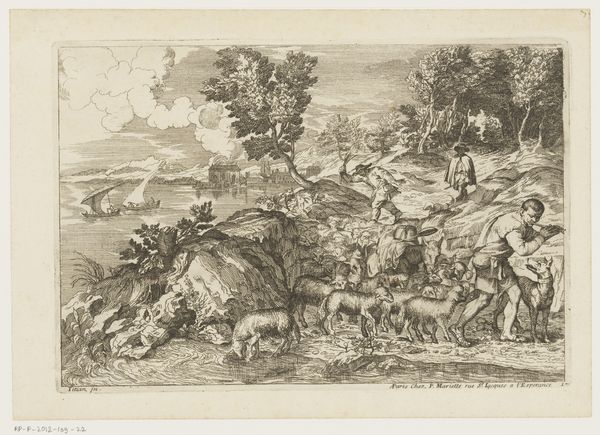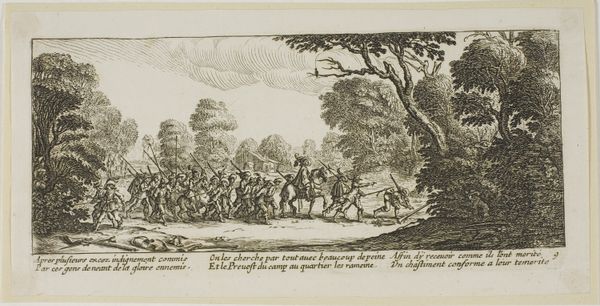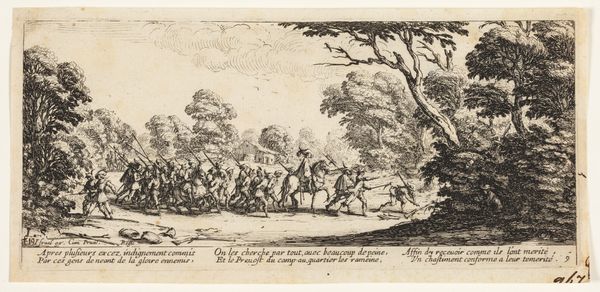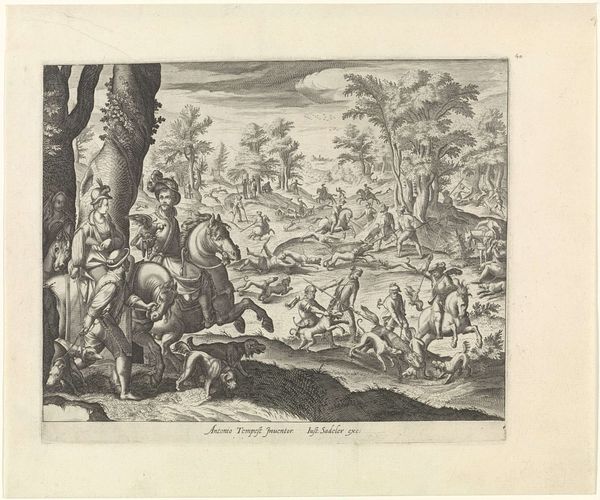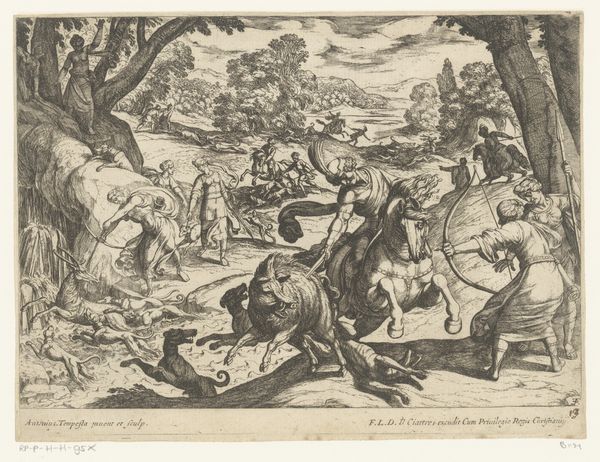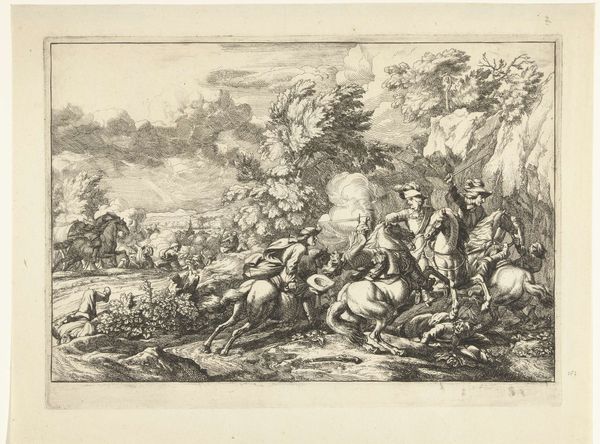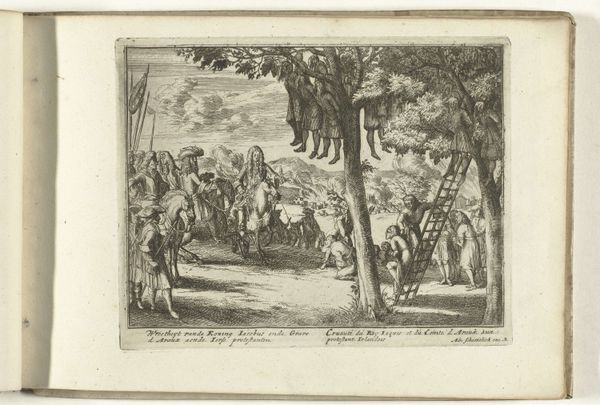
The Peasants Avenge Themselves, plate seventeen from The Large Miseries of War n.d.
0:00
0:00
drawing, print, etching, paper, engraving
#
drawing
#
narrative-art
#
baroque
# print
#
etching
#
paper
#
history-painting
#
engraving
Dimensions: 75 × 182 mm (image); 84 × 184 mm (plate); 101 × 201 mm (sheet)
Copyright: Public Domain
Editor: This etching, titled "The Peasants Avenge Themselves" from "The Large Miseries of War", is unsettling. The landscape is littered with bodies and dominated by violence. What is the historical context behind this intense scene? Curator: This print, created through etching and engraving, visually captures the social upheavals and atrocities committed during periods of war, reflecting the Thirty Years' War’s impact on daily life. Look closely at the figures. Who holds the power here and how does the artist depict it? Editor: I see armed peasants fighting back, suggesting resistance. There's even a hanged soldier, maybe symbolizing retribution. But their expressions seem grim, not triumphant. Is this a celebration of peasant power or a condemnation of violence? Curator: It is much more complex than just a condemnation or celebration. Van Schagen seems to explore how prolonged conflict distorts moral boundaries for all involved. Consider the phrase underneath the etching: "After many depredations committed by the soldiers... at last, the peasants, whom they regard as enemies, surprise them". This print highlights how the structures of power affect civilian populations during periods of prolonged military occupation. Can you see where the central message may lie? Editor: Perhaps it’s a stark depiction of how ordinary people become agents of violence when pushed to their limits. I initially thought it was solely about the miseries of war enacted upon people, but now it’s about them enacting violence, too. Curator: Exactly. It is not merely observing conflict. It actively engages with how ordinary people respond to systemic oppression, reflecting a dark period in European history marked by immense social upheaval. Editor: So the artwork goes beyond the face value of violence; it's a meditation on societal breakdown. The setting becomes a stage where war dismantles traditional morality and forces brutal choices. Thank you. Curator: A valuable insight that reveals a deep understanding of history and art as interconnected disciplines.
Comments
No comments
Be the first to comment and join the conversation on the ultimate creative platform.

